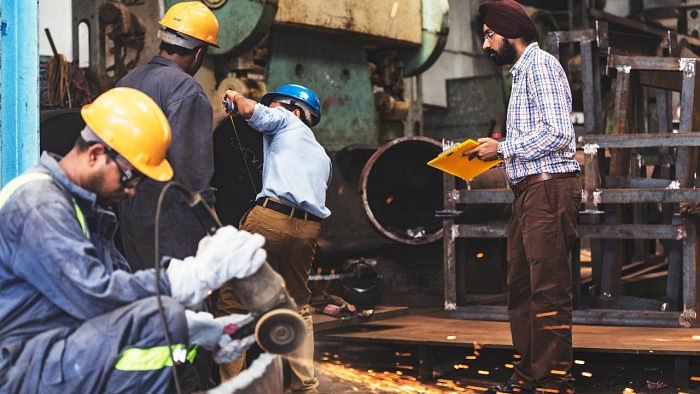
India’s manufacturing Purchasing Managers’ Index (PMI) came down marginally in September, but it continued to be in expansion mode for the 15th month in a row, indicating factories have stepped up production and hired more workforce.
A survey by S&P Global stated that Indian manufacturing PMI came at 55.1 in September from 56.2 in August. PMI above 50 denotes expansion and below that mark indicates contraction.
“The latest set of PMI data show us that the Indian manufacturing industry remains in good shape, despite considerable global headwinds and recession fears elsewhere,” said Pollyanna De Lima, Economics Associate Director at S&P Global Market Intelligence.
“There were softer, but substantial, increases in new orders and production in September, with some leading indicators suggesting that output looks set to expand further at least in the short-term as firms seek to fulfil sales contracts and replenish stocks,” Lama said.
According to the survey, companies hired extra labour force and acquired more inputs to accommodate higher sales and greater output needs. Employment rose at the quickest pace in three months.
Talking about inflation, Lama said: “Once again we saw businesses become more confident in the outlook as inflation worries were tamed. The overall level of positive sentiment seen in September was the best in over seven-and-a-half years… That said, currency risks and the impact of a weaker rupee on inflation and interest rates could derail optimism during October."
India’s retail price inflation, which the Reserve Bank of India (RBI) tracks for its monetary policy making, came at 7 per cent in August—a full per cent above the central bank’s upper limit of 6.
To tame rising prices, the RBI hiked its key policy lending rate by 50 basis points last week to 5.9 per cent. This was the fourth policy rate increase in a row in the past about five months.
The RBI has also been intervening in the market to counter rupee which is at 80.31 to a dollar mark.
